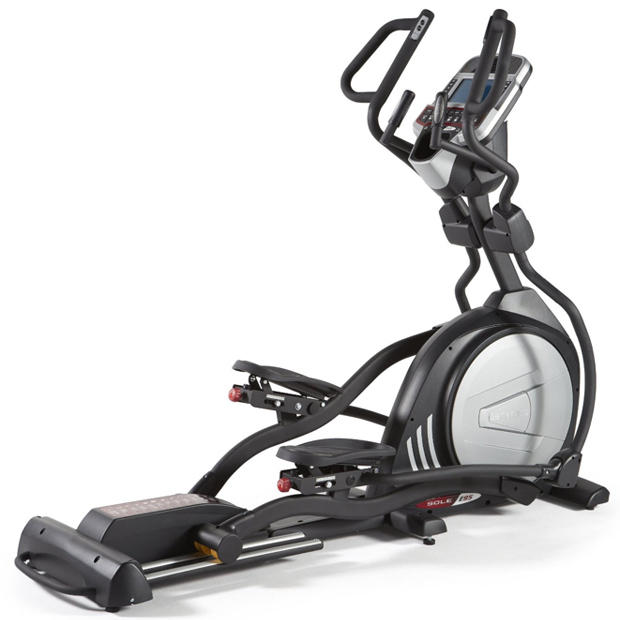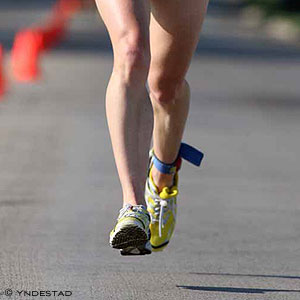Treadmill or Elliptical?
Treadmills are much more popular than elliptical machines for Slowtwitchers, and why wouldn't they be? Triathletes run, bike and swim. When they need to mimic cycling while not cycling they most often choose stationary trainers. Then they want to mimic running they choose treadmills. Makes sense.
Half of all Slowtwitchers either own a treadmill or are planning to get one. Almost no Slowtwitchers intend to buy an elliptical and very few have them now. But there is a case for an elliptical machine, especially if your ambition for run training exceeds your body's capacity to maintain such training without soreness and injury.
If you want to run a lot of miles – the annual 100/100 Challenge is ongoing right now, with north of 500 Slowtwitchers officially taking part – that's a lot of running. It's certain that many or most participants will end up with sore legs if not some niggling pain and injuries. How do you keep up your running, or at least your run fitness, while minimizing the strain that's causing the injury?

It's true the treadmill may provide a run that generates less impact than running outside. Still, it's a very run-specific activity and everything I've read affirms that treadmills parallel road running biomechanically and in effort expended. Treadmill running is very analogous to road running.
An elliptical machine is not directly run specific. In my own experience and opinion it gets more run specific as the machine's stride length increases. Stride length on an elliptical is kind of like crank length on a bike: you can opt for a tighter or more expansive orbit around a fulcrum, but that orbit is fixed. In running this is not the case.
But as you increase the size of that orbit the exercise feels more like running. Of course it's not a round orbit, as in pedaling a bike. The orbit is a very flat ellipse (well, it should be a flat ellipse; not all are made this way, make sure the elliptical has a flat profile before you invest in one). As the stride length decreases I am obliged to adopt or maintain what feels like a more upright, balanced position over the footbeds, such that I feel more like I'm riding out of the saddle while climbing. This sensation is no doubt enhanced by my holding onto the protrusions that emanate from the pedestal in front of the machine – I never use the swinging ski pole like hand-holds on these machines. Also, the stance width of elliptical machines is analogous to riding a bicycle, and is wider than during running.
In my experience, a stride length of 18" or shorter feels more like riding out of the saddle; 20" or longer is more akin to running. I'm 6'2" tall, so, if you find this helpful I imagine you should scale that to shorter or taller riders accordingly. I bought a Precor 5.23 for my wife last year, and she finds no problem with its 18" stride length. When I use it I find myself wanting 20" or more. Most men would, I think, prefer a stride length of 20" to 22" in their elliptical machines, especially if they want something more analogous to running.
It's been my observation – though I haven't studied it – that elliptical machines designed with flywheels in front are more likely to offer longer stride lengths. Sole models (such as the E35 pictured) are made this way and they typically offer 20" to 22" stride lengths (often adjustable). The Precor in our home is a fine machine but the pedals must fit in between the front pedestal and the rear flywheel. It seems to me that this design limits available stride lengths.
Why would a triathlete choose an elliptical over a treadmill, since he already has some kind of stationary cycling simulator? A couple of reasons. First, if you do find it of value to simulate climbing out of the saddle you're going to get a closer analog on an elliptical than on a bike trainer. Second – and I have found this to be of specific value – the elliptical is more analogous to running than any stationary device save a treadmill, and when I need to take a break from, or augment, running in any form then the elliptical is just the ticket.
My most common and recurring injury is "mad calf disease." This is the bane of men over 40. It's not fatal. But there's no vaccination for it either. It's like a rhinovirus: it's an annoyance that sidelines us, but it'll only put us out of action for a week or two. When I'm dealing with any of my typical running injuries – mad calf, high hamstring strain, medial collateral knee ligaments – I augment running with elliptical workouts, or I migrate entirely to the elliptical for a few days.
Both kinds of machines are good for running fitness. The treadmill is dead-on analogous to outdoor running, but that means you carry your road running injuries and sorenesses onto the treadmill. The elliptical is the best device for run training when you need an alternative to running. You can't run on a treadmill the day after a bout of mad calf; you can "run" on the elliptical the day after a calf strain.



